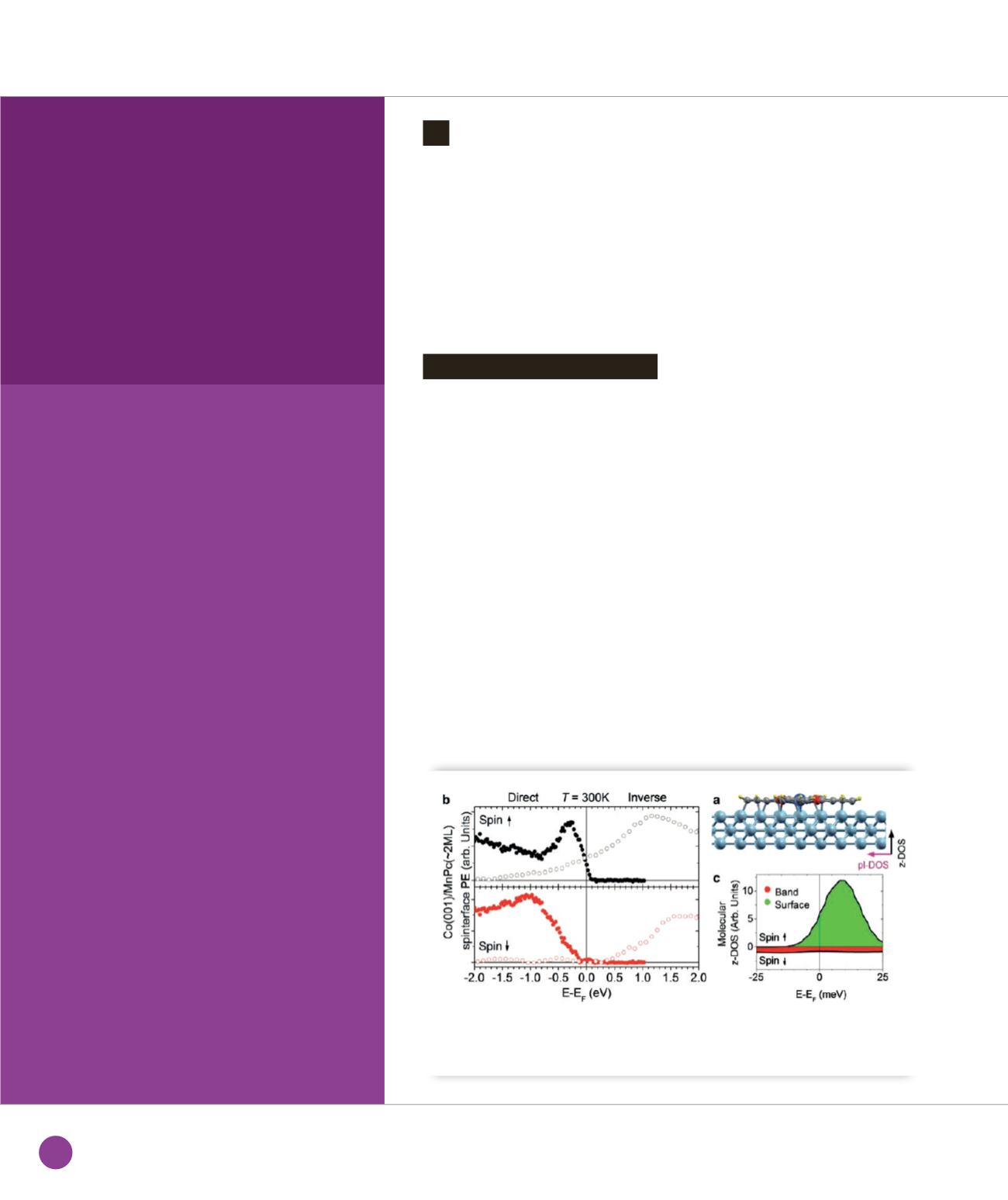
Approaching
the Holy Grail
of spintronics
At age 25, the field of spintronics, which
conceptually takes into account the electron
spin in electronics, is now an integral part
of our daily lives. It for instance governs
the operation of read/write heads within
our computer hard drives and of magnetic
random access memories (MRAM). Thus,
from optoelectronic relays to artificial
synapses, spintronics is an additional means
to encode and process information. Until
now, spintronics has shone particularly
in the development of efficient electronic
components. However, it is also necessary
to transmit the encoded information over
mesoscopic distances between these
spintronics devices. This is best achieved
when using a current source that is highly
spin-polarized. An international group led by
researchers at Strasbourg has discovered a
promising candidate to fulfill this mission.
Within a spintronics paradigm, the transfer
of information encoded by the electron
spin shall be more efficient if the current
is strongly spin-polarized. Indeed, while
conventional electronics perform binary
encoding based on the presence or
absence of an electron, spintronics would
encode this using the spin-up or spin-
down property of this electron.
To achieve this strongly spin-polarized
current source, various classes of
materials (half-metals, diluted magnetic
semiconductors, symmetry-preserving
filters) have been explored. However,
the spin polarization of the current
supplied by these solutions does
not remain strong in a nanodevice
at the temperatures required by industry.
Researchers from the Strasbourg Institute
of Physics and Chemistry of Materials
(IPCMS) believe they have found a new
way to overcome these obstacles.
Leading an international group, they
have worked over the past two years
to understand a surprising phenomenon:
combining commonplace materials
such as cobalt (Co) and phthalocyanine
(Pc) molecules, which are used as ink
pigments, creates an interface (see
Figure
➊
a
) in a device that can spin-filter
84% of the current flowing through it. This
prediction is based on measurements of
spin-resolved photoemission, carried out
on the CASSIOPEE beamline at the SOLEIL
synchrotron starting in December 2010.
This experimental technique probes the
number of occupied electronic states of
each spin type, starting from the energy
level at which electrical conduction level
takes place (i.e. the Fermi level E
F
. These
measurements show that the interface
between Co and Pc molecules is endowed
with a strong spin asymmetry of electronic
states at the E
F
at room temperature
(see Figure
➊
b
). These results were then
confirmed by additional spin-resolved
inverse photoemission measurements (at
the Politecnico di Milano, Italy), allowing
the unoccupied electronic
states above E
F
to be probed.
Cobalt and phthalocyanine
➊
The adsorption of phthalocyanine molecules on Co (
a
) would generate a strong spin asymmetry of the current
at EF going through this interface (z direction) according to experimental measurements (
b
) and theoretical
calculations (
c
).
SURFACES, INTERFACES AND NANOSYSTEMS
18
SOLEIL
HIGHLIGHTS
2013


